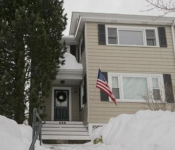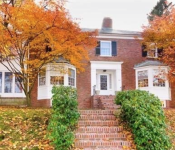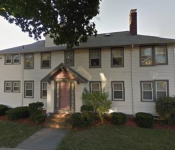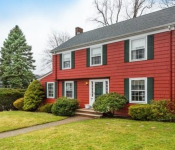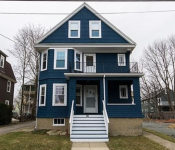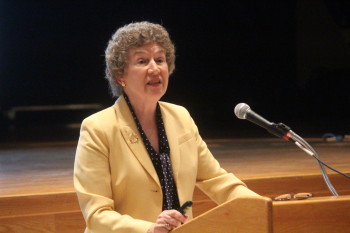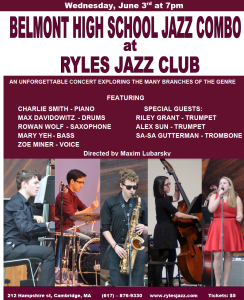Photo: Palfrey Street.
Palfrey Road is one of the worst conditioned streets in Belmont.
Due to the steady amount of traffic – many vehicles use the roadway as a convenient detour onto Trapelo Road bypassing the Cushing Square lights – and the unlevel pitch of the road, the thoroughfare’s road surface running between Common Street and Gilbert Road at times resembles a Peruvian mountain path with crevasses and pot holes that involuntarily realign cars wheels and steering.
But long-suffering commuters and residents need only wait just about a year for relief as the byway was placed on the town’s fiscal year 2016 road reconstruction list that totals $2.55 million.
Announced at this week’s Town Meeting by Glenn Clancy, director of Community Development, Palfrey joins 12 other roads deemed so in disrepair that it made the cut for reconstruction. More than half of the streets have a pavement condition index (PCI) in the 30s, considered a “poor” grade where travel is “uncomfortable with frequent bumps or depressions.”
The list with the corresponding CPI rating includes:
- Clifton Street (32) from Beatrice Circle to Prospect Street
- Bartlett Avenue (33) from White Street to Harriet Avenue
- Winslow Road (34) from Hammond Road to Palfrey Road
- Palfrey Road (35) from Gilbert Road to Common Street
- Payson Terrace (35) from Payson Road east to Payson Road west
- Glendale Road (36) from Common Street to Orchard Street.
- Cushing Avenue (36) from Pine Street to Payson Road
- Sharpe Road (37) from School Street to Washington Street
- Marion Road (39) from Belmont Street to Grove Street
- Albert Avenue (40) from Tobey Road to Brighton Street
- Albert Avenue (53) from Lake Street to Tobey Road
- Simmons Avenue (41) from Scott Road to Brighton Street
- Middlecot Street (40) from north of Cowdin Street to Claflin Street
- Middlecot Street (72) from Cross Street to north of Cowdin Street
- Sherman Street (41) from Brighton Street to Dean Street.
Clancy said the list is subject to change based on the availability of utility work to be completed on the roads in 2016. But he added that National Grid, the gas utility, has stepped up the rate of conversions this year insomuch that he believes that most, if not all, of the roads on the list will be completed by the end of the construction season next year.




























